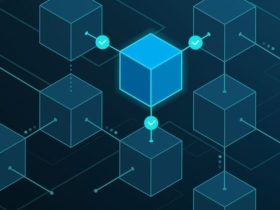Cybersecurity remains one of the most critical components of the modern digital landscape. Today’s developments showcase the power of partnerships, advancements in education, and the ever-evolving nature of cyber threats. This briefing explores collaborations between leading firms, groundbreaking training initiatives, and the dual role of AI in defense and attacks.
Global Partnerships Bolster Cybersecurity Resilience
A major collaboration was announced between Adlumin, a cybersecurity and compliance automation company, and several global financial institutions. This partnership aims to enhance the detection of emerging threats, optimize incident response times, and fortify compliance measures.
As financial institutions face increasingly sophisticated attacks, partnerships like this exemplify the importance of collaborative defenses. By pooling resources and sharing threat intelligence, these organizations create a stronger collective defense against cyber adversaries.
The initiative underscores the trend of shifting from isolated defenses to interconnected ecosystems that amplify threat detection and response capabilities.
Source: PR.com, November 24, 2024
MongoDB Expands its Cybersecurity Footprint
MongoDB, Inc. has expanded its partnership with industry leaders to deliver robust cybersecurity solutions tailored for developers. This collaboration aims to embed security features directly into development workflows, ensuring software security from inception.
The partnership aligns with the growing emphasis on shift-left security practices, where security measures are integrated early in the development lifecycle rather than treated as an afterthought.
As developers increasingly rely on cloud-native and distributed architectures, MongoDB’s expanded focus on security reflects an industry-wide recognition that development and security must evolve hand in hand.
Source: Yahoo Finance, November 24, 2024
UTSA and USAA Lead the Way in Cybersecurity Education
The University of Texas at San Antonio (UTSA), in partnership with USAA, has inaugurated a new AI and cybersecurity-focused student success center. The facility aims to equip students with cutting-edge knowledge and hands-on experience in defending against modern cyber threats.
This collaboration represents a broader trend of academia and industry uniting to address the cybersecurity talent gap. With AI playing a dual role in defense and offense, educational institutions must prepare the next generation of cybersecurity professionals to adapt to rapidly changing threat landscapes.
Such initiatives also highlight the importance of embedding practical skills into cybersecurity education, ensuring students graduate workforce-ready.
Source: My San Antonio, November 24, 2024
Google’s Cybersecurity Career Certificate: A Game-Changer in Training
Google has launched a new cybersecurity career certificate that promises to prepare students for entry-level jobs in just six months. The program focuses on practical skills, such as threat analysis, risk assessment, and incident response, addressing the growing demand for skilled professionals in the cybersecurity sector.
This initiative is particularly significant given the global talent shortage in cybersecurity. By lowering barriers to entry and fast-tracking skill development, programs like Google’s certificate can democratize access to cybersecurity careers and fill critical workforce gaps.
The industry’s rapid evolution requires a workforce that can hit the ground running. Short-term, skill-intensive programs like this are essential for meeting immediate demands.
Source: Open Culture, November 24, 2024
KnowBe4 Predicts AI’s Pivotal Role in Cyber Threats
KnowBe4, a leader in security awareness training, has issued a report predicting that advancements in AI will significantly shape the cybersecurity landscape. While AI-driven defenses are becoming more sophisticated, threat actors are also leveraging AI to launch more complex and adaptive attacks.
The report warns of potential challenges, including AI-generated phishing schemes, automated vulnerability exploitation, and deepfake-based social engineering. Simultaneously, AI-driven tools promise to enhance threat detection, automate incident response, and fortify endpoint defenses.
This duality highlights the urgency for organizations to stay ahead of the curve, adopting AI tools not just to defend against today’s threats but also to anticipate tomorrow’s.
Source: PR Newswire, November 24, 2024
Strength in Collaboration and Preparedness
Cybersecurity is not just a technical challenge; it is a collective responsibility. Today’s developments illustrate the multifaceted approach needed to safeguard digital ecosystems. From partnerships like those forged by Adlumin and MongoDB to groundbreaking educational initiatives by UTSA and Google, the message is clear: collaboration is key.
However, the evolving threat landscape, particularly with the rise of AI, poses challenges that cannot be underestimated. The insights from KnowBe4 highlight a pressing reality: as technology advances, so do the tools of cyber adversaries. Organizations must not only invest in cutting-edge defenses but also foster a culture of continuous learning and adaptability.
The emphasis on education, seen in UTSA’s AI-focused center and Google’s career certificate, is perhaps the most crucial development. Bridging the talent gap will be essential for staying ahead of increasingly sophisticated threats. By equipping the workforce with practical, up-to-date skills, we can create a more resilient digital future.
Key Takeaways for Cybersecurity Professionals
- Partnerships are critical for amplifying threat detection and response capabilities.
- Shift-left practices, as exemplified by MongoDB, are redefining software security.
- Educational initiatives like UTSA’s success center and Google’s certificate address the talent gap in cybersecurity.
- AI plays a dual role, acting as both a defense enabler and an attack vector.
- Collaborative ecosystems and rapid workforce training are essential for building resilience.
















Got a Questions?
Find us on Socials or Contact us and we’ll get back to you as soon as possible.